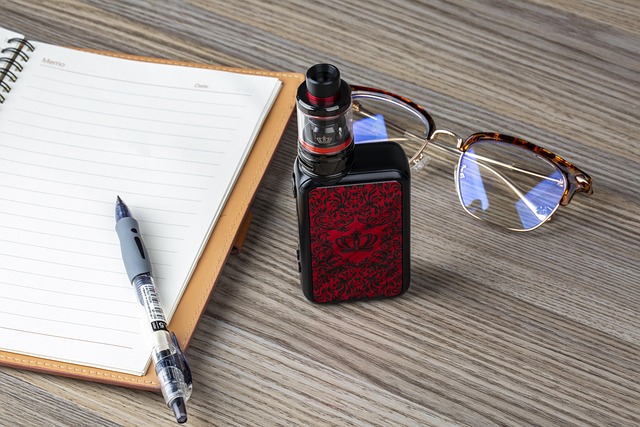THC-A vape cartridges offer a discrete, precise dosing method for cannabis consumption, with key components including a heating coil, oil tank, and safety mechanisms. Material choices like glass and stainless steel ensure quality and ease of cleaning. Advanced ceramic coils provide temperature control, enhancing flavor while minimizing risks. Ergonomic designs and automatic activation simplify usage. Stringent quality control and regulatory adherence guarantee product safety. Future trends focus on sustainability, improved materials, smart tech integration, and compact designs for a growing market demanding convenient, eco-friendly vaping solutions.
“The rise of portable vape cartridges has transformed the way cannabis users enjoy their products, offering convenience and discretion. This article delves into the intricate world of THC-A vape cartridges, exploring key design elements that make them a popular choice. From understanding the basic components to material safety and innovative features, we’ll uncover the secrets behind these compact yet powerful devices. Additionally, we’ll discuss regulatory measures, emerging trends, and how these factors shape the future of portable THC-A vape cartridge design.”
Understanding THC-A Vape Cartridges: The Basics

THC-A vape cartridges are a crucial component in the world of vaporization, offering a convenient and discrete way to consume cannabis. At their core, these cartridges are small, portable devices designed to deliver concentrated THC (tetrahydrocannabinol) in its active form, THC-A (tetrahydrocannabinolic acid). The basic structure includes a cartridge body, often made of glass or plastic, which holds the e-liquid or oil containing THC-A. A coil heats this substance, vaporizing it for inhalation.
The appeal lies in their ease of use and precision dosing. Each cartridge typically contains a specific amount of THC-A, allowing users to control their intake. Moreover, they provide a clean and healthy alternative to traditional smoking methods, as the heating process avoids burning plant material, minimizing potential harmful byproducts. Understanding the fundamentals of THC-A vape cartridges is essential for both new and experienced cannabis consumers looking to incorporate this versatile delivery method into their routine.
Key Components of a Portable Cartridge Design

The design of a portable THC-A vape cartridge involves several key components that work harmoniously to deliver a smooth and effective vaping experience. At its core, a portable vape cartridge consists of a heating element, typically a coil, which is responsible for vaporizing the concentrated THC-A oil stored within the cartridge. The coil’s design, including its gauge and material, significantly impacts the overall performance and longevity of the cartridge.
Beyond the heating element, the cartridge includes a tank or reservoir to hold the liquid THC-A oil, often coated with a flavoring agent for enhanced taste. A key component for ensuring proper airflow is the air intake system, which allows fresh air to mix with the vaporized oil, optimizing the user’s inhale experience. Additionally, modern portable cartridges often incorporate safety features like child-proof caps and built-in sensors to prevent overheating or accidental activation, enhancing both user safety and satisfaction.
Material Considerations for Safety and Performance

When designing a portable THC-A vape cartridge, material selection is paramount for both safety and performance. The ideal materials must be biocompatible, ensuring no adverse reactions with the user’s vaporized substance. Additionally, they should withstand the heat generated during vaping while maintaining structural integrity. Glass and stainless steel are popular choices; glass offers clarity and resistance to chemicals, while stainless steel guarantees durability and a smooth finish.
For optimal performance, materials should facilitate efficient heating and air flow, enhancing flavor and vapor production. They must also be easy to clean and maintain, ensuring longevity and minimizing the risk of contamination. Consideration for material compatibility with specific vaping oils is crucial to prevent degradation or chemical interactions that could compromise safety.
Optimizing Vaporization: Heating Elements and Airflow

Optimizing vaporization in THC-A vape cartridges involves a delicate balance between heating elements and airflow. Advanced heating technologies, such as ceramic heating coils, offer consistent and precise temperature control, ensuring the safe and complete vaporization of THC-A. These coils are designed to evenly distribute heat across the cartridge’s surface, maximizing extraction while minimizing the risk of overheating or uneven combustion.
Airflow plays a crucial role in delivering a smooth and flavorful vaping experience. Well-designed cartridges incorporate strategic air pathways that guide fresh air through the heating element, creating an ideal environment for vaporization. This ensures that users inhale pure, potent vapors rich in THC-A, enhancing their overall enjoyment without compromising on quality or potency.
Design Innovations for User Experience and Convenience

Modern portable vape cartridges, particularly those designed for THC-A, have witnessed remarkable innovations aimed at enhancing user experience and convenience. One prominent design aspect is the integration of advanced heating elements that offer precise temperature control, ensuring optimal vaporization of the active compounds within the cartridge. This not only improves flavor but also maximizes the efficacy of each puff, providing users with a more satisfying and consistent experience.
Furthermore, engineers have focused on creating sleek, ergonomic designs that fit comfortably in the hand, making them easy to use on-the-go. Many cartridges now feature automatic activation mechanisms, eliminating the need for complicated buttons or switches. This simplicity, coupled with the ability to easily replace or recharge the cartridge, has made THC-A vape cartridges a convenient and popular choice for those seeking portable, discrete, and effective consumption methods.
Regulatory and Quality Control Measures in Portable Cartridge Manufacturing

In the highly regulated industry of portable cartridge manufacturing, especially for THC-A vape cartridges, adhering to stringent quality control measures is paramount. Each step of production involves meticulous testing and inspection to ensure safety and efficacy. Regulatory bodies set standards that dictate material composition, manufacturing processes, and labeling requirements to safeguard consumers from potentially harmful products. Manufacturers must implement robust in-house quality control protocols to monitor critical parameters like battery integrity, coil performance, and cannabinoid purity. This includes regular checks during assembly and final product testing before distribution.
The focus on quality control extends beyond individual cartridges. It encompasses the entire supply chain, from sourcing high-quality materials to ensuring proper storage conditions to prevent degradation. Regular audits and third-party certifications further guarantee compliance with regulatory standards. These measures collectively contribute to maintaining consistent product performance and consistency, enhancing consumer trust in the market for THC-A vape cartridges.
Future Trends in THC-A Vape Cartridge Design

The evolving landscape of vaping technology is pushing the boundaries of what’s possible with THC-A vape cartridge design. Future trends hint at more sophisticated materials, focusing on biocompatibility and sustainability. Cartridge manufacturers are exploring innovative solutions like biodegradable or recyclable outer shells, reflecting a growing awareness for environmental impact. Internally, advancements in heating elements will likely result in improved flavor delivery and longer coil lifespans.
Additionally, smart technology integration could transform the user experience. This might include sensors that monitor usage patterns, battery life, and even detect specific terpenes or cannabinoids, providing personalized recommendations. Design will also focus on enhancing portability, with sleek, compact shapes that easily fit in pockets or purses. These developments promise to cater to the growing demand for discreet, convenient, and eco-conscious THC-A vaping solutions.
